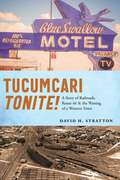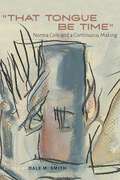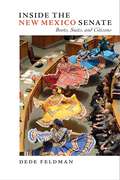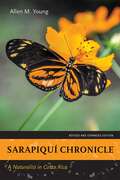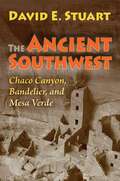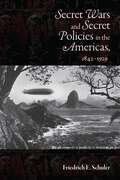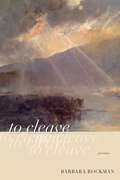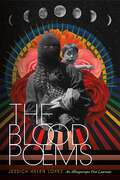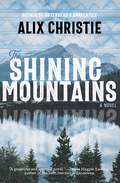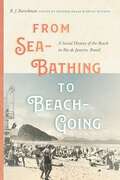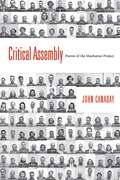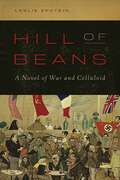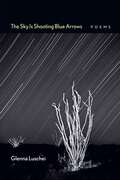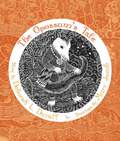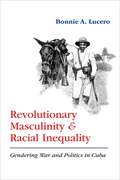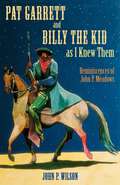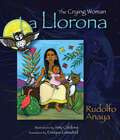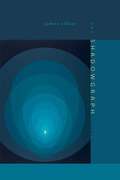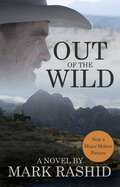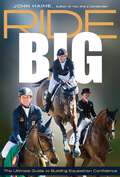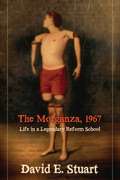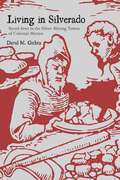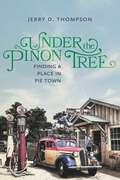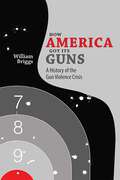- Table View
- List View
Tucumcari Tonite!: A Story of Railroads, Route 66, and the Waning of a Western Town
by David H. StrattonTucumcari, New Mexico, was founded in 1901 by the Rock Island Railroad and soon had major railroad lines converging there from Chicago, Los Angeles, and Memphis as well as a northern branch line from the Dawson coalfields. The federal highway system established Route 66, the &“Main Street of America,&” through the middle of town in 1926. Tucumcari flourished as a tourist mecca, welcoming travelers with its blazing displays of neon lights. But mergers, reorganizations, and financial problems of the railroads, as well as the creation of the interstate highway system that bypassed small places, brought a sharp decline to the once-prosperous town.Tucumcari Tonite! blends in-depth research and personal and family experiences to re-create a &“memoir&” of Tucumcari. Drawing on newspapers and government documents as well as business records, personal interviews, and archival holdings, Stratton weaves a poignant tale of a western town&’s rise and decline—providing a prime example of the destructive forces that have been inflicted on small towns in the West and all across America.
"That Tongue Be Time": Norma Cole and a Continuous Making (Path to Open)
by Dale M. SmithOriginally from Canada, Norma Cole is a revered writer and visual artist who has authored and translated over thirty books and chapbooks. Though highly esteemed internationally in both visual art and poetry circles, Cole&’s association with the New College of California and her influence on artists and poets has been overlooked by scholars. In &“That Tongue Be Time,&” Dale M. Smith seeks to remedy this oversight by bringing together sixteen noted scholars, editors, and poets to examine Cole&’s poetry, translations, and visual art in order to place her within the larger scholarly conversation about contemporary poetry and poetics. The book also includes a number of black-and-white reproductions of Cole&’s art and a contextual introduction by Smith. &“That Tongue Be Time&” provides a groundbreaking look at Norma Cole&’s lasting influence on multiple generations of poets, visual artists, and scholars and should be on the shelf of anyone interested in contemporary poetry.
Inside the New Mexico Senate: Boots, Suits, and Citizens
by Dede Feldman&“Completely honest and highly informative. To look at a legislative body is to observe democracy in the raw—with all its diverse characters and influences and its many conflicts, compromises, and achievements. Dede Feldman, a first-rate observer and chronicler, shows us the insides of the New Mexico State Senate.&”—Fred Harris, former U.S. Senator and professor emeritus of political science, University of New MexicoElected to New Mexico&’s state senate in 1996, Dede Feldman faced the challenges that confront state legislators around the country along with some that are uniquely New Mexican. In this forthright account of the workings of New Mexico&’s legislature, she reveals how the work of governing is actually accomplished.In New Mexico&’s part-time citizen legislature, Spanish may be spoken in the halls of the capitol as often as English, and Native American issues are often pivotal. But each year the Land of Enchantment&’s legislators, like those in other states, must balance revenues and expenditures, tangle with lobbyists, and struggle with redistricting and campaign finance reform. State legislatures&’ approaches to air pollution, drunk driving, and chronic disease, Feldman&’s book reveals, find their way into national law after they&’ve been road tested on the highways of various states.
Sarapiquí Chronicle: A Naturalist in Costa Rica. Revised and Expanded Edition.
by Allen M. Young&“Young . . . brings the trained eye of an entomologist and an unabashed admiration for the beauty of nature to this engaging and informative account of his experiences during twenty-one years of fieldwork in Costa Rica&’s rainforests.&”—Publishers Weekly&“A splendid read. For newcomers to the moist tropics, and for any but the most sated old-timers, it can be commended for an entertaining account of a locality where life is lived to the full—by all species, including the human observer.&”—Norman Myers, New ScientistThe abundant insect life of the rainforests of northeastern Costa Rica is the subject of this engaging book, first published over twenty-five years ago and now including two new chapters on the rise of ecotourism in the region.
The Ancient Southwest: Chaco Canyon, Bandelier, and Mesa Verde. Revised edition.
by David E. StuartOver twenty-five years ago, David Stuart began writing award-winning newspaper articles on regional archaeology that appealed to general readers. These columns shared interesting, and usually little-known, facts and stories about the ancient people and places of the Southwest. By 1985, Stuart had penned enough columns to fill a book, Glimpses of the Ancient Southwest, which has been unavailable for years. Now he has rewritten most of his original articles to include recently discovered information about Chaco Canyon, Bandelier, and Mesa Verde. Stuart's unusual perspective focuses on both the past and the present: Want to know why gasoline now costs $4.00 a gallon, and is headed higher, yet we have no instant solution? Chacoan, Roman, even Egyptian archaeology all provide elemental answers. The Ancient Southwest shares those with us.
Secret Wars and Secret Policies in the Americas, 1842-1929
by Friedrich E. SchulerThe conflicts that culminated in the First and Second World Wars had their origins in the rise of imperial powers in North America, Europe, and Asia in the late nineteenth century and the imperialist quests for the resources of colonies and former colonies. American expansionists, encouraged by a growing U.S. Navy, nurtured U.S. policies with illusions of easy access to South America. Policy makers in the fledgling empires of Germany, Japan, Spain, and Italy relied on clandestine means to rival U.S. ambitions. In this original and thoroughly researched book, based on new sources from previously unused collections in Germany and Spain, Friedrich E. Schuler details their attempts to suborn ethnic groups within Latin America but also the United States to establish ethnic beachheads that would serve to undermine U.S. interests. These deeply disturbing lessons became central historical reference points for U.S. policy makers during World War II.Not surprisingly, though rarely covered in Latin American historiography, Latin American nations, but also Spain, developed their own plans to exploit these imperialist rivalries after World War I. The resulting intrigue and subterfuge revealed in this revisionist study add a fascinating new dimension to our understanding of transpacific and transatlantic politics during this critical period of world history.
50 5-Minute Fixes to Improve Your Riding
by Wendy Murdoch5 minutes a day is all the time you need to achieve:Better balance in the saddleImproved body control from head to toeIncreased influence with your seatFlawless leg position and subtle aidingQuieter, softer hands and contact your horse can trustLess physical stiffness, tension, and riding-related painConfidence in your ability to communicate with your horsePlus, in just 5 minutes you can improve a horse that's:Unwilling to go forward or dead to the legHollow-backed, high-headed, or above the bitHeavy on the forehand and unbalancedA chronic puller, leaner, or head-tosserStart or end your riding sessions with Wendy Murdoch's 5-Minute Fixes, and you'll be amazed how quickly you can replace old habits with new ones, get out of your riding rut, and transform what youcan'tdo to what youcando…naturally, capably, comfortably, and consistently alongside a happy riding partner—your horse.
to cleave: poems (Mary Burritt Christiansen Poetry Series)
by Barbara RockmanFull of sensory detail and written with astute observation, to cleave searches for and lays bare the mythic moments one finds even in the most ordinary life. In this stunning collection Rockman explores the themes of aging; our relationships to our bodies; marriage; and the surprises, griefs, and joys of motherhood. Each of the seven sections urges readers to view their daily lives with renewed curiosity and wonder.
The Blood Poems (The Albuquerque Poet Laureate Series)
by Jessica Helen LopezThe Blood Poems is one part bloodletting, one part healing, and one part sensuous celebration as Jessica Helen Lopez lays out what it means to be a strong brown woman, a single mother, and the kickass bard that the twenty-first century needs. Lopez openly faces a damaging childhood, sex, divorce, and racial injustice in these poems. She proves that love is as complicated as lovemaking—messy and lusty, raucous and powerful, capable of amazing highs and abysmal lows. She proves that when a woman learns to love herself, she will live a fierce and full life and teach her daughters to do the same.
The Shining Mountains: A Novel
by Alix ChristieThe year is 1838. A young Scotsman forced from his homeland arrives at Hudson&’s Bay. Angus McDonald is contracted to British masters to trade for fur. But the world he discovers is beyond even a Highlander&’s wildest imaginings: raging rivers, buffalo hunts, and the powerful daughter of an ancient and magnificent people. In Catherine Baptiste, kin to Nez Perce chiefs, Angus recognizes a kindred spirit. The Rocky Mountain West in which they meet will soon be torn apart by competing claims: between British fur traders, American settlers, and the Native peoples who have lived for millennia in the valleys and plateaus of the Shining Mountains&’ western slopes.In this epic family saga, the real history of the American West is revealed in all its terror, beauty, and complexity. The Shining Mountains brilliantly limns a world now long forgotten: of blended cultures seeking allies, trading furs for guns and steel, and a way of life in collision with westward colonial expansion.
From Sea-Bathing to Beach-Going: A Social History of the Beach in Rio de Janeiro, Brazil (Diálogos Series)
by B.J. Barickman2023 Honorable Mention, Warren Dean Prize in Brazilian HistoryIn From Sea-Bathing to Beach-Going B. J. Barickman explores how a narrow ocean beachfront neighborhood and the distinctive practice of beach-going invented by its residents in the early twentieth century came to symbolize a city and a nation. Nineteenth-century Cariocas (residents of Rio) ostensibly practiced sea-bathing for its therapeutic benefits, but the bathing platforms near the city center and the rocky bay shore of Flamengo also provided places to see and be seen. Sea-bathing gave way to beach-going and sun-tanning in the new beachfront neighborhood of Copacabana in the 1920s. This study reveals the social and cultural implications of this transformation and highlights the distinctive changes to urban living that took place in the Brazilian capital. Deeply informed by scholarship about race, class, and gender, as well as civilization and modernity, space, the body, and the role of the state in shaping urban development, this work provides a major contribution to the social and cultural history of Rio de Janeiro and to the history of leisure.
Critical Assembly: Poems of the Manhattan Project (Mary Burritt Christiansen Poetry Series)
by John CanadayWith technical mastery and remarkable empathy, Canaday introduces readers to the people involved in the creation and testing of the first atomic bomb, from initial theoretical conversations to the secretive work at Los Alamos. Critical Assembly also includes brief biographies, notes, and a bibliography for further exploration about this critical event in world history.
Hill of Beans: A Novel of War and Celluloid
by Leslie EpsteinThe film Casablanca opens with the words, &“With the coming of the Second World War, many eyes in imprisoned Europe turned hopefully, or desperately, toward the freedom of the Americas.&” Leslie Epstein&’s Hill of Beans is the story of how one nation, one industry, and in particular one man responded to that desperate hope. That man is Jack Warner. His impossible goal is to make world events—most importantly, the invasion of North Africa by British and American forces in 1942—coincide with the release of his new film about a group of refugees marooned in Morocco. Arrayed against him are Stalin and Hitler, as well as Josef Goebbels, Franklin Roosevelt, a powerful gossip columnist, and above all a beautiful young woman with a terrible secret. His only weapons are his hutzpah and his heroism as he struggles to bring cinema and city, conflict and conference together in an epic command performance.Hill of Beans is the novel that Leslie Epstein—the son and nephew of Philip and Julius Epstein, the screenwriters of Casablanca—was born to write.
The Sky Is Shooting Blue Arrows: Poems (Mary Burritt Christiansen Poetry Series)
by Glenna LuscheiIn this new book Glenna Luschei&’s poems take her and her readers around the world, including to Tunisia and Colombia, but in the end they return to center on the American West, where her heart lies. Celebrating life, travel, aging, and nature, this new book shines with Luschei&’s view of the world.
The Opossum's Tale (The Grandmother Stories)
by Deborah L. DuvallHave you ever seen an opossum, hurrying across the road with its eyes and coat shining in your headlights? Or hanging upside down from a tree? Or lying on the ground 'playing possum' as if dead? And did you ever wonder why the opossum acts this way? The ancient Cherokee people wondered about the opossum, whose silly grin and hairless tail caught their imagination. In those days, the people had no written language, and they relied on stories to explain the behavior of the animals in their world. According to Cherokee legend, the Opossum owned a magnificent tail, covered in glistening fur, of which he was terribly proud. The tail was so magnificent, in fact, that the Opossum thought it his duty to make everyone else appreciate it as well. In this seventh volume of the Grandmother Stories, Si-qua the Opossum brags constantly about his tail until his neighbors can stand it no more. Something must be done about him! The prideful Si-qua is overcome by loss and despair when his outer beauty is suddenly gone. But an unexpected ally helps Si-qua discover powerful abilities within himself that will soon win the true admiration of his friends. Visit the authors' website at www.jacobandduvall.com.
Revolutionary Masculinity and Racial Inequality: Gendering War and Politics in Cuba
by Bonnie A. LuceroOne of the most paradoxical aspects of Cuban history is the coexistence of national myths of racial harmony with lived experiences of racial inequality. Here a historian addresses this issue by examining the ways soldiers and politicians coded their discussions of race in ideas of masculinity during Cuba&’s transition from colony to republic. Cuban insurgents, the author shows, rarely mentioned race outright. Instead, they often expressed their attitudes toward racial hierarchy through distinctly gendered language—revolutionary masculinity.By examining the relationship between historical experiences of race and discourses of masculinity, Lucero advances understandings about how racial exclusion functioned in a supposedly raceless society. Revolutionary masculinity, she shows, outwardly reinforced the centrality of color blindness to Cuban ideals of manhood at the same time as it perpetuated exclusion of Cubans of African descent from positions of authority.
Pat Garrett and Billy the Kid as I Knew Them: Reminiscences of John P. Meadows
by John P. WilsonCowboy, army guide, farmer, peace officer, and character in his own right, John P. Meadows arrived in New Mexico from Texas as a young man. During his life in the Southwest, he knew or worked for many well-known characters, including William &“Billy the Kid&” Bonney, Sheriff Pat Garrett, John Selman, Hugh Beckwith, Charlie Siringo, and Pat Coghlan. Meadows helped investigate the disappearance of Colonel Albert Jennings Fountain, and he later bought part of downtown Tularosa, New Mexico, where he served a term as mayor.The recollections gathered here are based on Meadows&’s interviews with a reporter for the Alamogordo News, a partial transcript of his reminiscences given at the Lincoln State Monument, and a talk he gave by invitation in Roswell, New Mexico, to refute inaccuracies in the 1930 MGM movie Billy the Kid.
La Llorona: The Crying Woman
by Rudolfo AnayaLa Llorona, the Crying Woman, is the legendary creature who haunts rivers, lakes, and lonely roads. Said to seek out children who disobey their parents, she has become a boogeyman, terrorizing the imaginations of New Mexican children and inspiring them to behave. But there are other lessons her tragic history can demonstrate for children. In Rudolfo Anaya's version Maya, a young woman in ancient Mexico, loses her children to Father Time's cunning. This tragic and informative story serves as an accessible message of mortality for children. La Llorona, deftly translated by Enrique Lamadrid, is familiar and newly informative, while Amy Córdova's rich illustrations illuminate the story. The legend as retold by Anaya, a man as integral to southwest tradition as La Llorona herself, is storytelling anchored in a very human experience. His book helps parents explain to children the reality of death and the loss of loved ones.
The Shadowgraph: Poems (Mary Burritt Christiansen Poetry Series)
by James CihlarIn The Shadowgraph James Cihlar explores the ways images, performances, and memories shape and inform LGBTQ+ identity. Golden-age Hollywood cinema—in particular the career of fiercely independent actress Barbara Stanwyck—provides the screen on which Cihlar projects characters and stories bravely, even defiantly, performed. Cihlar&’s commentary on individual films—as well as on human experience and desire—is intense, smart, and right on target.
Out of the Wild
by Mark RashidOne dark, vacant, Nevada night cattle rancher Henry McBride closes his eyes, only to open them and find his life suddenly in shambles, with everything that means anything lost to him forever. Overwhelmed by grief and haunted by guilt, Henry drives away from his past as far and as fast as he can. Jobs, towns, and whiskey come and go. He always tells himself he'll stay just long enough to earn the money he needs to buy his next drink, somewhere else on down the road.But guest ranch owner Jessie King extends an open and forgiving hand to the cowboy, and the arrival of a young mustang stallion—also wounded and alone—ignites a flicker of recognition in Henry. Like him…broken. With Jessie's powerful ability to connect with horses, and her gentle attempts to connect with Henry, time slows enough on the ranch to heal, just a little. But Jessie, too, has an imperfect past, and when her former ranch manager returns with murder in mind, the fragile world she, Henry, and the stallion are building together threatens to come crashing down.
Ride Big
by John HaimeAn easy-to-implement framework proven to grow rider confidence, tested by the world&’s leading equestrian athletes.Without confidence, achievement in competition is unattainable. When confidence is lacking in any sport, equestrian included, chances are your career will be short. Renowned performance coach John Haime has written the book to counter this challenge, providing the mental tools riders need to be better under pressure of all kinds and consistently succeed.Equestrian sport is a partnership: there&’s an equine athlete, and there&’s a human athlete. Haime notes that often, there is an investment in world-class training for one partner (the horse), but not the other (the human). This compromises the potential effectiveness of the horse-and-rider team. It justmakes sensefor equestrians to develop their own skills—mental and physical—and bring more to the partnership.Haime explains that there is what he believes is a crisis of confidence in modern equestrian sport. This has a variety of causes, including: a lack of fundamental mental/emotional structure and development, the presence and prominence of technology in the rider&’s life, and the constant comparisons inherent in social media and a technically &“connected&” existence. Addressing this crisis enables equestrians of all ages and abilities to: communicate better with their horses, both in day-to-day interactions and competition; absorb more in valuable learning situations, such as lessons and clinics; and perform their best when the stakes are high, as when heading into the jump-off or approaching the last fence on the cross-country course.Haime invites readers to dive into three clear and informative areas of exploration:The Confidence Building Blocks:Firm up the fundamentals.The Confidence Builders:Systems and tips to help you build confidence.The Confidence Threats:An inside look at what to watch out for in riding and in competition.Throughout, those who have reached the highest levels on horseback in a number of disciplines share their stories, including Michael Jung, Beezie Madden, McLain Ward, Laura Tomlinson, Harry Meade, Oliver Townend, Mattias Tromp, Casey Deary, Beth Underhill, Fred Mannix, Jared Zenni, Jonathon Millar, and Kelly Soleau-Millar. These Olympians, champions, and medalists explain what they do in the saddle and how their techniques for performing under world-class pressure might help other riders develop a similar kind of confidence. Perhaps even more valuable are the struggles these top competitors share, giving readers the rare opportunity to see how even &“the best of the best&” are human, too.The way riders develop confidence in their equestrian lives is transferable toeverythingthey do: a confident rider can be a confident business person, confident worker, confident spouse, confident parent, and confident friend. In this way,Ride Big!™instills a skill of worth and promise that extends far beyond the show ring.
The Morganza, 1967: Life in a Legendary Reform School
by David E. StuartFresh out of college, David Stuart put off graduate school to take a job close to his West Virginia home as a counselor at the Youth Development Center at Canonsburg, Pennsylvania. Known locally as the Morganza, the facility was founded in the nineteenth century as a farm for orphaned boys. By the 1960s, the Morganza had long been burdened with a sinister reputation when it was converted into a detention center for Allegheny County youth convicted of crimes ranging from petty theft to armed robbery, rape, and murder. Reporting for duty during the racially turbulent and riot-torn summer of 1967, Stuart describes the life of students and staff in what was, in reality, a youth prison camp. Confronted with the glaring shortcomings of the reform school's methods of rehabilitation, Stuart irritated the bureaucracy, advocating for detainees whose only crimes were a lack of education and belonging to the wrong race or economic class. He confronted an establishment that refused to distinguish between hardened criminals and those who would benefit from actual reform. In The Morganza, 1967 Stuart offers a brutally honest--at times touching--insider's view of a juvenile justice system that was badly in need of fixing.
Living in Silverado: Secret Jews in the Silver Mining Towns of Colonial Mexico
by David M. GitlitzIn this thoroughly researched work, David M. Gitlitz traces the lives and fortunes of three clusters of sixteenth-century crypto-Jews in Mexico&’s silver mining towns. Previous studies of sixteenth-century Mexican crypto-Jews focus on the merchant community centered in Mexico City, but here Gitlitz looks beyond Mexico&’s major population center to explore how clandestine religious communities were established in the reales, the hinterland mining camps, and how they differed from those of the capital in their struggles to retain their Jewish identity in a world dominated economically by silver and religiously by the Catholic Church.In Living in Silverado Gitlitz paints an unusually vivid portrait of the lives of Mexico&’s early settlers. Unlike traditional scholarship that has focused mainly on macro issues of the silver boom, Gitlitz closely analyzes the complex workings of the haciendas that mined and refined silver, and in doing so he provides a wonderfully detailed sense of the daily experiences of Mexico&’s early secret Jews.
Under the Piñon Tree: Finding a Place in Pie Town
by Jerry D. ThompsonWinner of the Historical Society of New Mexico Fabiola Cabeza de Vaca Award Raised in Catron County around Pie Town, Jerry D. Thompson is a well-known Southwestern and Civil War historian. Part regional history, part family history, and part childhood memories, Under the Piñon Tree traces the lives of Catron County residents and explores how the area has grown and changed since the Depression and World War II, when Thompson&’s family first homesteaded the area. Those interested in storytelling and history will enjoy this richly detailed account. Under the Piñon Tree is a must-read for anyone interested in New Mexico and the Southwest.
How America Got Its Guns: A History of the Gun Violence Crisis
by William BriggsIn the United States more than thirty thousand deaths each year can be attributed to firearms. This book on the history of guns in America examines the Second Amendment and the laws and court cases it has spawned. The author&’s thorough and objective account shows the complexities of the issue, which are so often reduced to bumper-sticker slogans, and suggests ways in which gun violence in this country can be reduced.Briggs profiles not only protagonists in the national gun debate but also ordinary people, showing the ways guns have become part of the lives of many Americans. Among them are gays and lesbians, women, competitive trapshooters, people in the gun-rights and gun-control trenches, the NRA&’s first female president, and the most successful gunsmith in American history.Balanced and painstakingly unbiased, Briggs&’s account provides the background needed to follow gun politics in America and to understand the gun culture in which we are likely to live for the foreseeable future.
